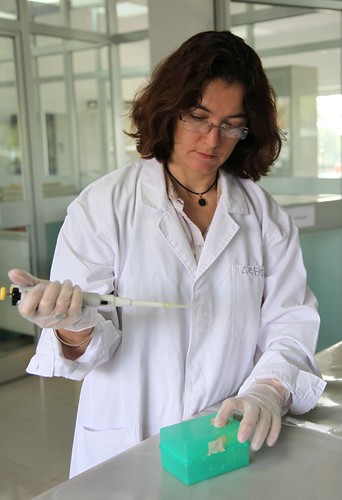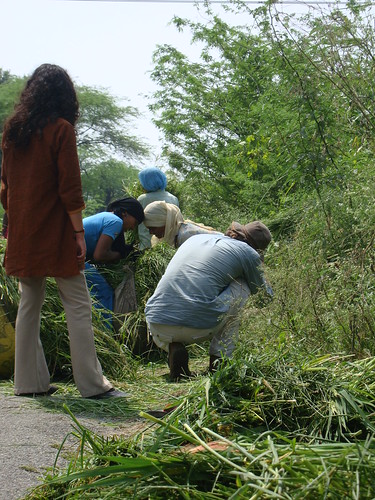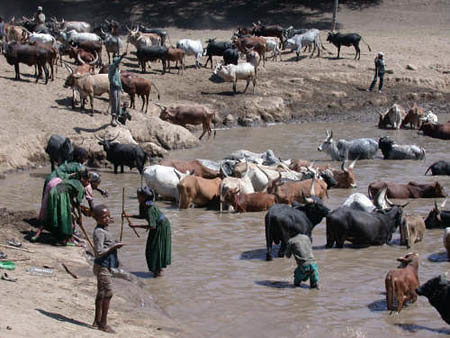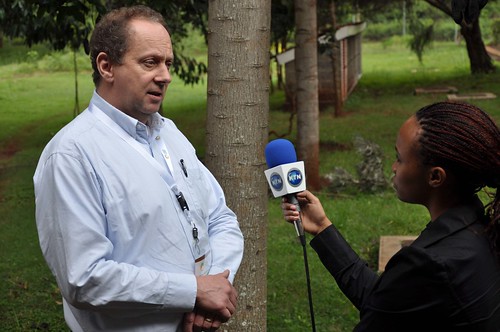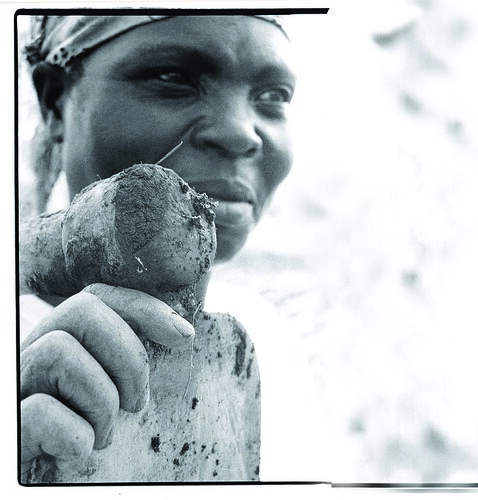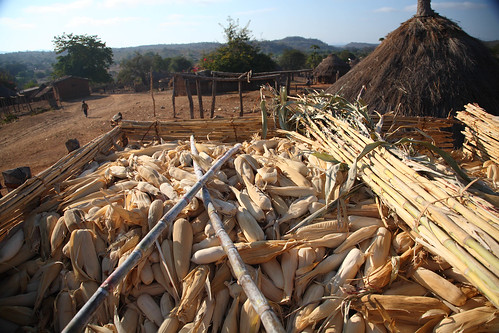The gender-specific disadvantages and inequities faced by rural women in poor countries create challenges for the research and development specialists working to help them empower themselves. Political, social and cultural environments all need to change before most women will be able to take a larger role in generating incomes. Men and women both need to be involved for that to happen. And when that does happen, men and women both will benefit from women’s empowerment.
The views of four women experts in the area, shown in this short (3 minute: 40 second) film, were recorded at a February 28–2 March workshop held at the International Livestock Research Institute (ILRI), in Addis Ababa, Ethiopia, where a group of experts assessed the current state of gender-related agricultural research in Africa, particularly the experiences of a 5-year joint ILRI-Ethiopian government project called ‘Improving Productivity and Market Success of Ethiopian farmers (IPMS).
The following is a transcript
Ranjitha Puskur, Indian, agricultural economist at International Livestock Research Institute (ILRI)
One of the major constraints that we saw that came in the way of helping women to take part in market-oriented agricultural activities is their lack of technical skills and knowledge.
Seblewongel Deneke, Ethiopian, sociologist at the Canadian International Development Agency (CIDA)–Ethiopia Canada Cooperation Office
The project that we are looking at now from IPMS with ILRI has done a lot of experimenting on how to target women, how to target the household, how to get them engaged and how in some ways make people see the other side of things.
Ranjitha Puskur
One of the things that we tried to do was to make sure the women have more access to knowledge and skill development through a number of trainings—and also bringing actually both the husband and wife together for the training so that they have a shared knowledge. We have demonstrated that this is a good way of approaching knowledge and skill sharing with women and men.
Jemimah Njuki, Kenyan, sociologist
What we have recently done in ILRI in terms of women and livestock is tried to put together what is it that we know at the moment on women and livestock and how to use livestock as a pathway out of poverty for women.
Seblewongel Deneke
That I think is one of the gaps in this country—there isn’t much research happening. And on gender specifically, I think we look to ILRI for some of the research it’s done. And I think the approach that they are using, working with their development partners in getting those research works done, is excellent and it should be strengthened.
Anne Waters-Bayer, Canadian/Dutch, Ecology, Technology and Culture Foundation
I’m a bit surprised, I must say, to come to a workshop now in 2011 and to hear actually many of the same things being said that were said back in the early 1980s. We published this 30 years ago but publishing wasn’t enough. We obviously didn’t manage to get into people’s heads, into their hearts and into the materials that they are dealing with day to day our messages about the important role of women in agricultural development.
Jemimah Njuki
We are hoping that this then becomes a starting point from which development partners can then start saying this has worked before, this has not worked and research organizations can then say, these are the further questions that we need to address in terms of generating evidence.
Seblewongel Deneke
Education is important. The more educated the women are, the more they will have control over the number of family members they can have. Reproductive health, the population pressure, all those things—there are many factors out there: it’s not just agriculture in isolation. For the research side of things that interlink—inter-linkages between sectors may be looked at, and then, maybe the answers would come from different angles.
Ranjitha Puskur
There have been a number of projects, often localized—projects working on specific issues in specific areas and at specific times. So there’s all these pieces of the puzzle scattered everywhere, and this workshop is an attempt to bring all this together.
Seblewongel Deneke
Yes, IPMS has done quite a bit of work on making research linked with the development aspect, and we have other projects that are doing similar approaches, where research and the development partners have come together to actually do the work together. And I think that is the best way to go forward.
Jemimah Njuki
We have made a lot of progress in terms of at least understanding what the gender issues in agriculture are, of even identifying some of the strategies that could be used to address these gender inequalities. I think what remains to be done is to see how those strategies, how those interventions, can be done at a scale that’s large enough to reach millions of women—which we need to do!


